Abstract
Two of the main features of human cholera—induction of diarrhoea and confinement of the infection to the lumen of the intestinal tract—may be reproduced in three experimental models: (a) the streptomycin-treated, starved guinea-pig; (b) the intestinal loop in the adult rabbit; and (c) the suckling rabbit. In this paper the author compares the two last-mentioned models with his earlier work in guinea-pigs.
Intestinal antibody (coproantibody) was highly protective, while circulating antibody had little or no effect, in all three models. The protective coproantibody was specific for the heat-stable vibrio antigens. It did not affect the growth of vibrios in the intestine, and its function may possibly be regarded as antitoxic rather than antibacterial. Oral vaccination protected adult rabbits against challenge by the loop technique. Heat-killed vaccine was as effective in this respect as live vaccine.
The author feels that the present uncertainty concerning the protective value of cholera vaccination may be due to the fact that conventional vaccine is designed to induce high serum titres only. He considers that since oral vaccine has been shown to induce and maintain the production of coproantibody in human volunteers, a field trial should be carried out to determine whether coproantibody is as protective in man as it has proved to be in the experimental models.
Full text
PDF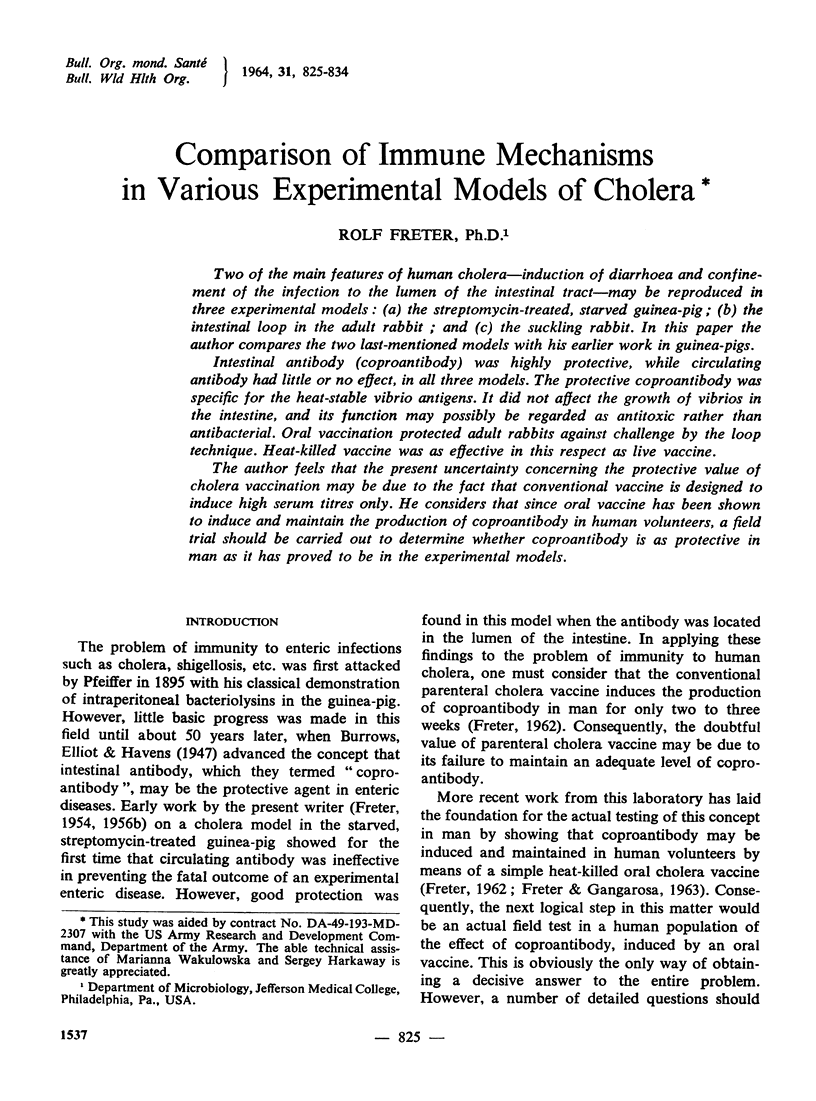
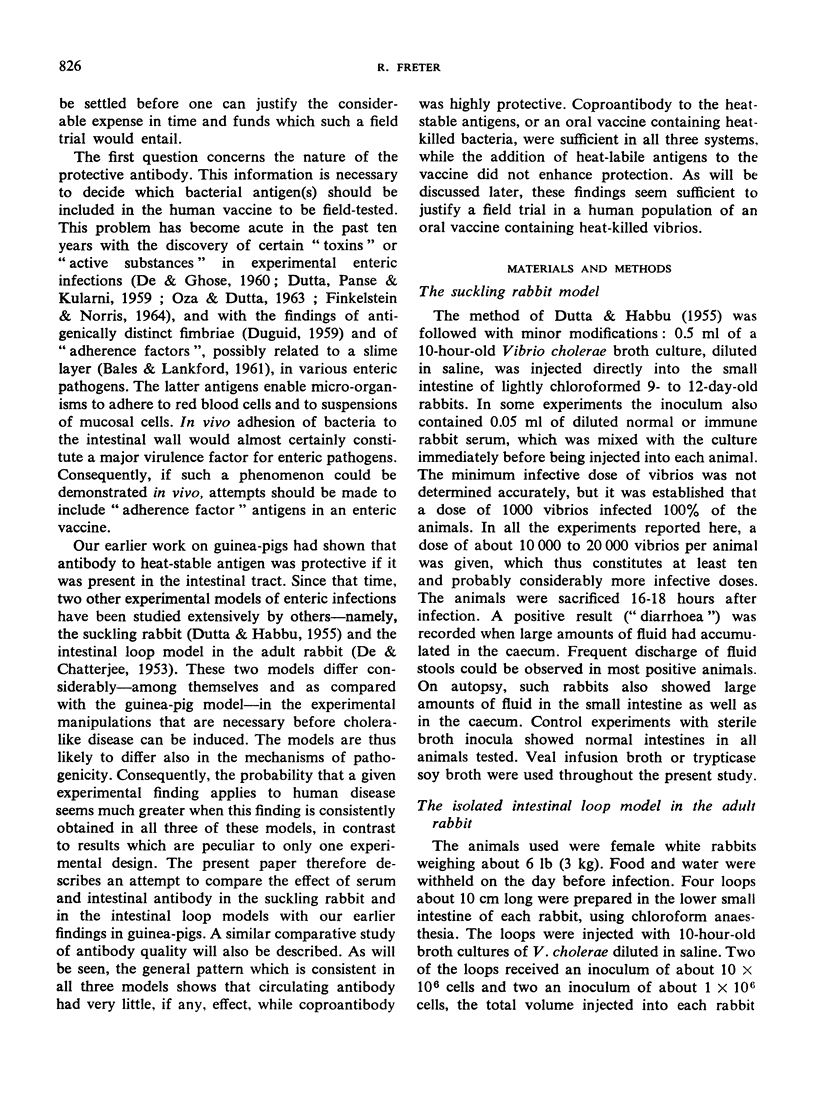


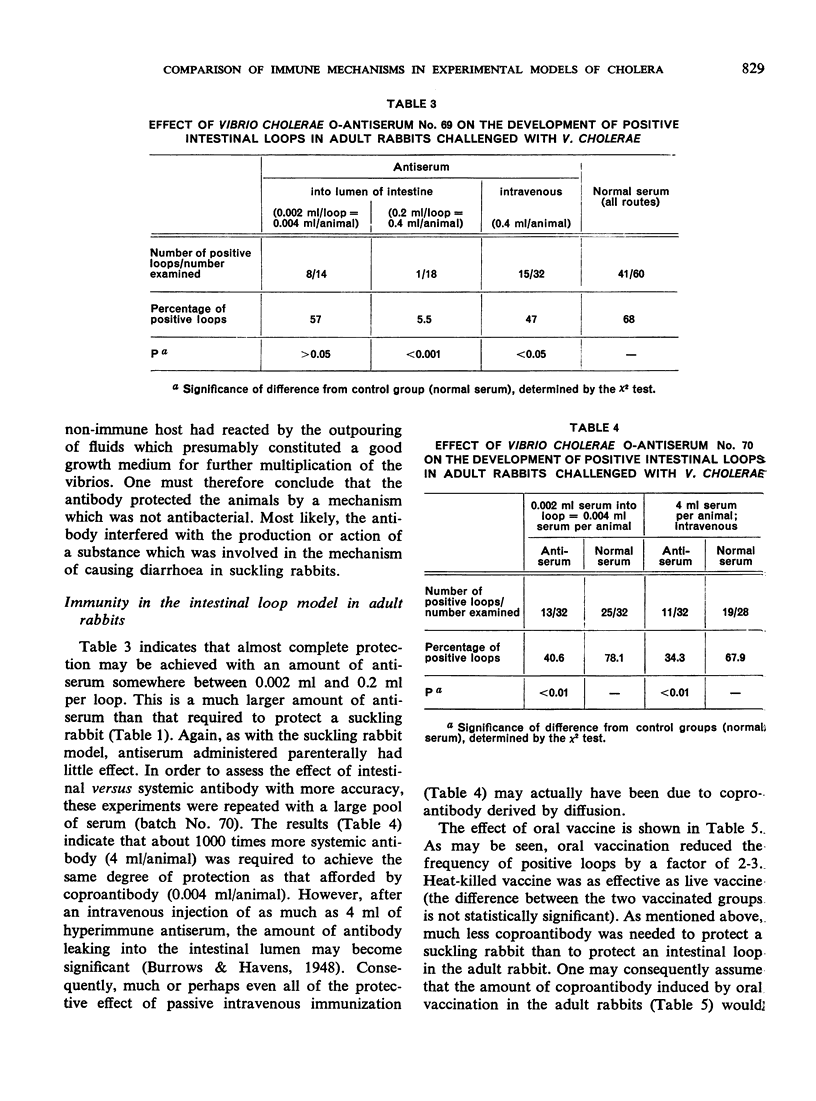
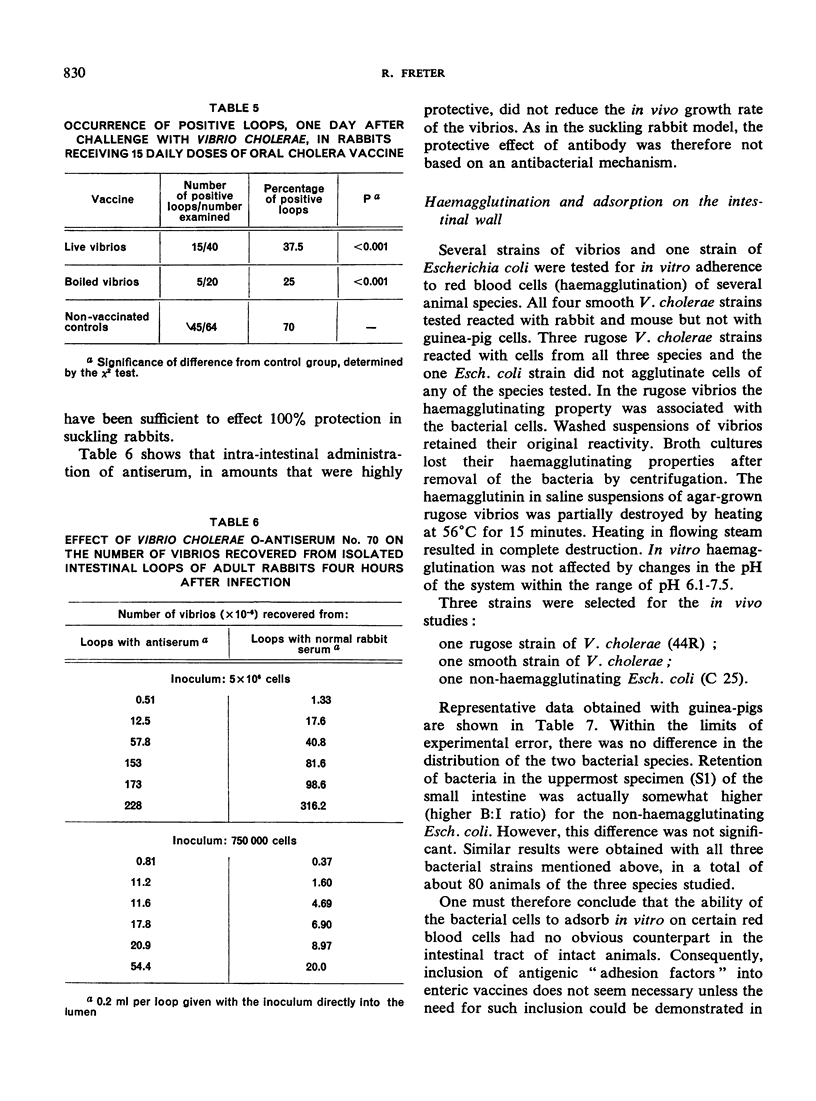
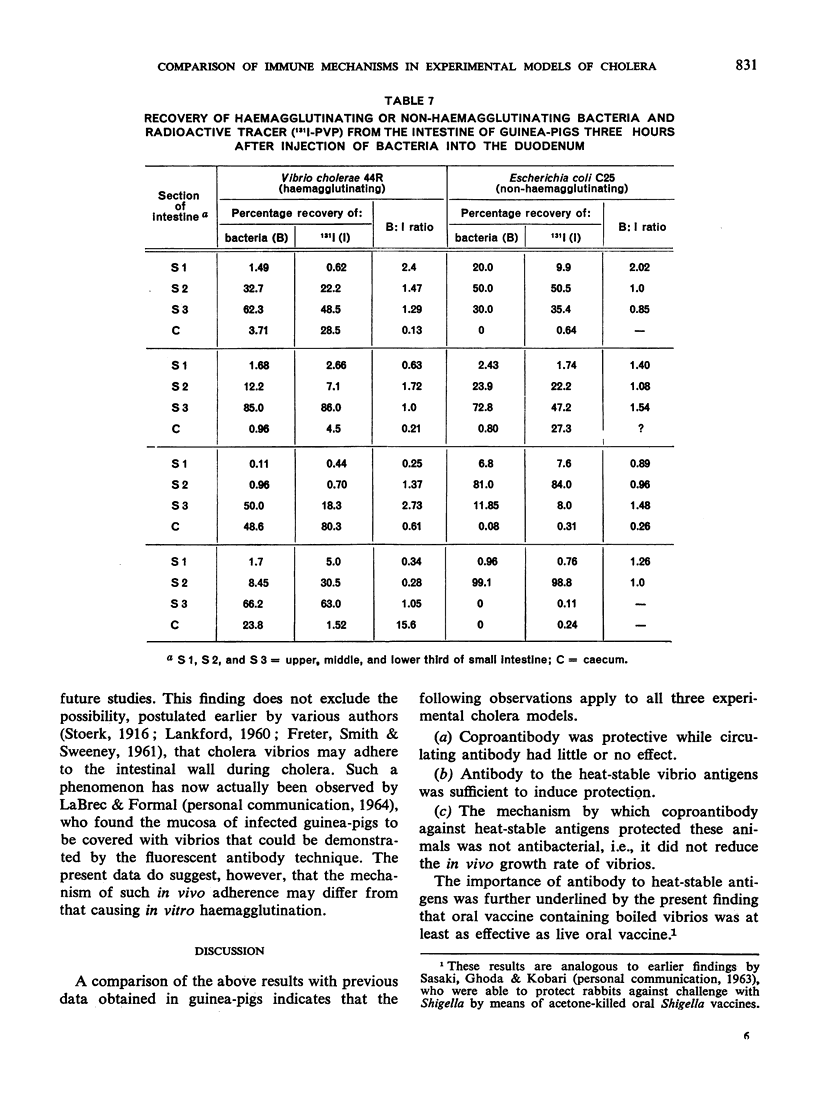
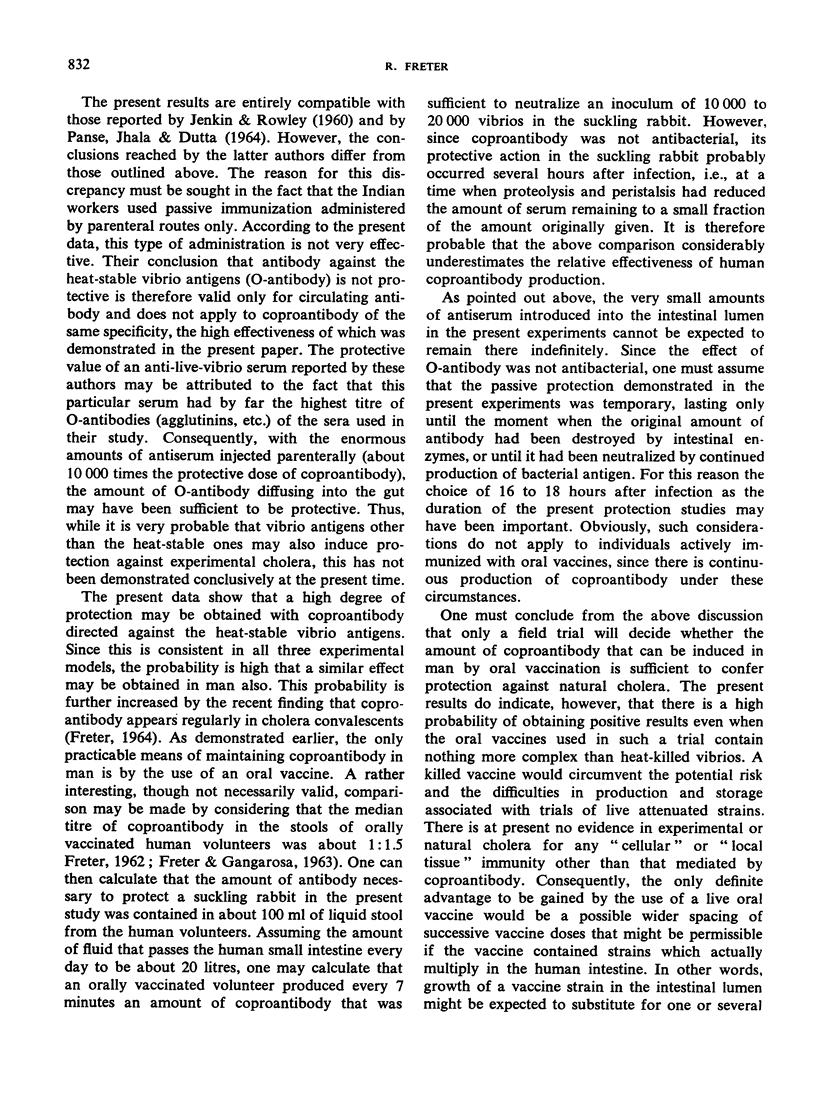
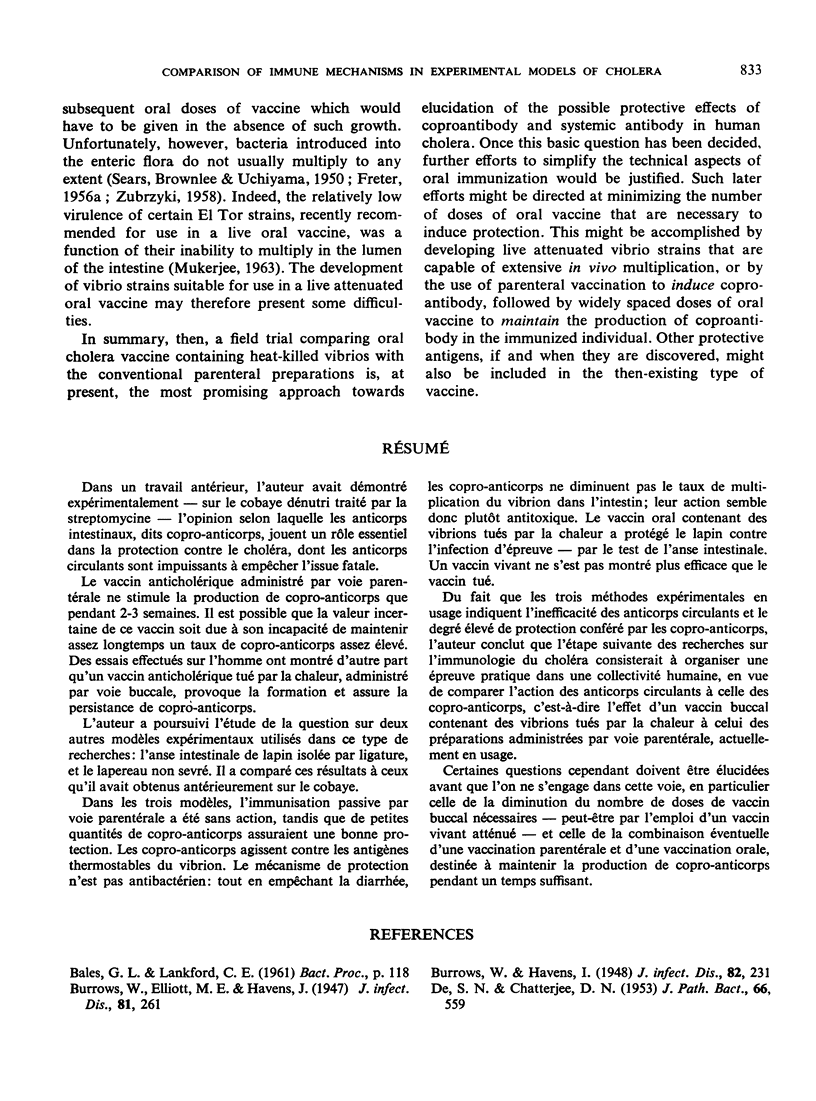
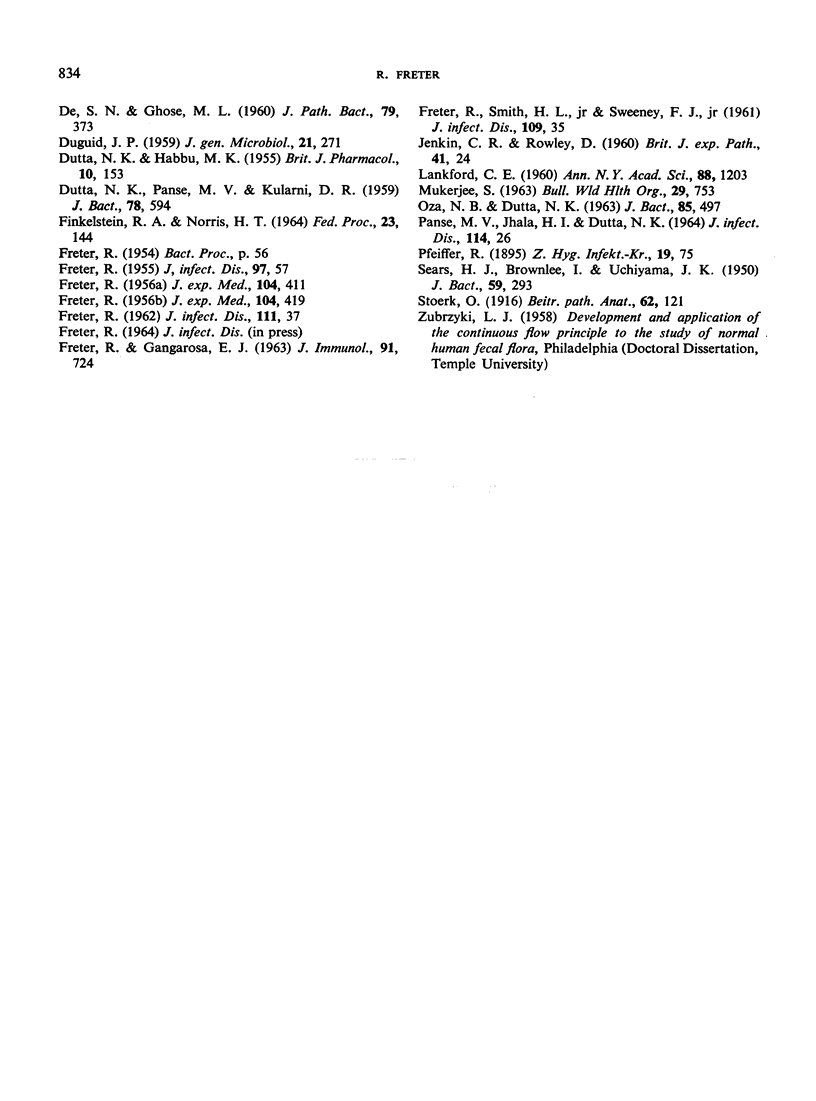
Selected References
These references are in PubMed. This may not be the complete list of references from this article.
- DE S. N., CHATTERJE D. N. An experimental study of the mechanism of action of Vibriod cholerae on the intestinal mucous membrane. J Pathol Bacteriol. 1953 Oct;66(2):559–562. doi: 10.1002/path.1700660228. [DOI] [PubMed] [Google Scholar]
- DE S. N., GHOSE M. L., SEN A. Activities of bacteria-free preparations from Vibrio cholerae. J Pathol Bacteriol. 1960 Apr;79:373–380. doi: 10.1002/path.1700790219. [DOI] [PubMed] [Google Scholar]
- DUGUID J. P. Fimbriae and adhesive properties in Klebsiella strains. J Gen Microbiol. 1959 Aug;21:271–286. doi: 10.1099/00221287-21-1-271. [DOI] [PubMed] [Google Scholar]
- DUTTA N. K., HABBU M. K. Experimental cholera in infant rabbits: a method for chemotherapeutic investigation. Br J Pharmacol Chemother. 1955 Jun;10(2):153–159. doi: 10.1111/j.1476-5381.1955.tb00074.x. [DOI] [PMC free article] [PubMed] [Google Scholar]
- DUTTA N. K., PANSE M. V., KULKARNI D. R. Role of cholera a toxin in experimental cholera. J Bacteriol. 1959 Oct;78:594–595. doi: 10.1128/jb.78.4.594-595.1959. [DOI] [PMC free article] [PubMed] [Google Scholar]
- FRETER R. Coproantibody and bacterial antagonism as protective factors in experimental enteric cholera. J Exp Med. 1956 Sep 1;104(3):419–426. doi: 10.1084/jem.104.3.419. [DOI] [PMC free article] [PubMed] [Google Scholar]
- FRETER R. Experimental enteric Shigella and Vibrio infections in mice and guinea pigs. J Exp Med. 1956 Sep 1;104(3):411–418. doi: 10.1084/jem.104.3.411. [DOI] [PMC free article] [PubMed] [Google Scholar]
- FRETER R., GANGAROSA E. J. ORAL IMMUNIZATION AND PRODUCTION OF COPROANTIBODY IN HUMAN VOLUNTEERS. J Immunol. 1963 Dec;91:724–729. [PubMed] [Google Scholar]
- FRETER R., SMITH H. L., Jr, SWEENEY F. J., Jr An evaluation of intestinal fluids in the pathogenesis of cholera. J Infect Dis. 1961 Jul-Aug;109:35–42. doi: 10.1093/infdis/109.1.35. [DOI] [PubMed] [Google Scholar]
- JENKIN C. R., ROWLEY D. The importance of antibody in the prevention of experimental cholera in rabbits. Br J Exp Pathol. 1960 Feb;41:24–30. [PMC free article] [PubMed] [Google Scholar]
- LANKFORD C. E. Factors of virulence of Vibrio cholerae. Ann N Y Acad Sci. 1960 Nov 21;88:1203–1212. doi: 10.1111/j.1749-6632.1960.tb20111.x. [DOI] [PubMed] [Google Scholar]
- MUKERJEE S. PRELIMINARY STUDIES ON THE DEVELOPMENT OF A LIVE ORAL VACCINE FOR ANTI-CHOLERA IMMUNIZATION. Bull World Health Organ. 1963;29:753–766. [PMC free article] [PubMed] [Google Scholar]
- Oza N. B., Dutta N. K. EXPERIMENTAL CHOLERA PRODUCED BY TOXIN PREPARED BY ULTRASONIC DISINTEGRATION OF VIBRIO COMMA. J Bacteriol. 1963 Feb;85(2):497–498. doi: 10.1128/jb.85.2.497-498.1963. [DOI] [PMC free article] [PubMed] [Google Scholar]
- PANSE M. V., JHALA H. I., DUTTA N. K. PASSIVE IMMUNITY IN EXPERIMENTAL CHOLERA. J Infect Dis. 1964 Feb;114:26–30. doi: 10.1093/infdis/114.1.26. [DOI] [PubMed] [Google Scholar]
- SEARS H. J., BROWNLEE I., UCHIYAMA J. K. Persistence of individual strains of Escherichia coli in the intestinal tract of man. J Bacteriol. 1950 Feb;59(2):293–301. doi: 10.1128/jb.59.2.293-301.1950. [DOI] [PMC free article] [PubMed] [Google Scholar]


